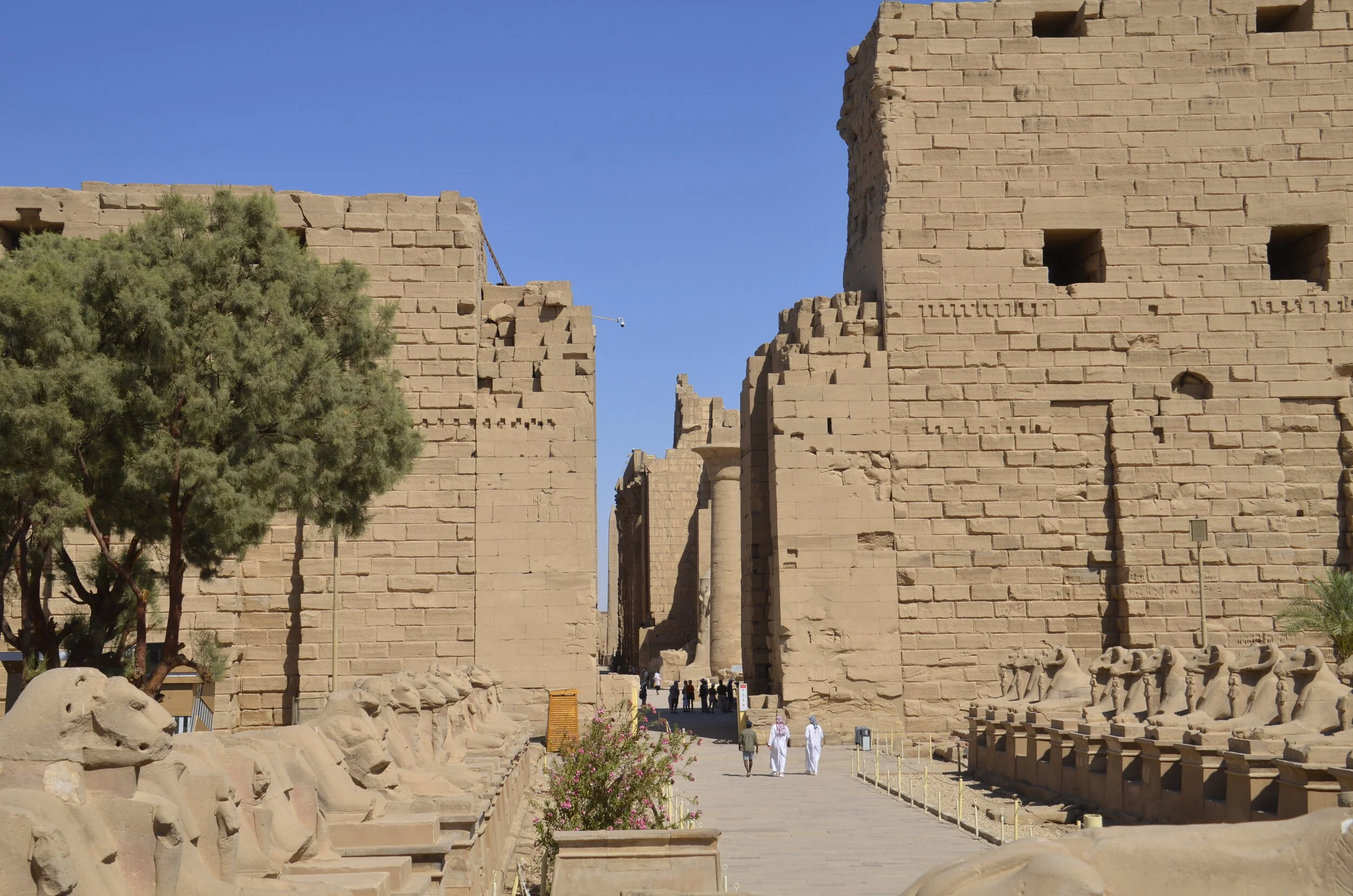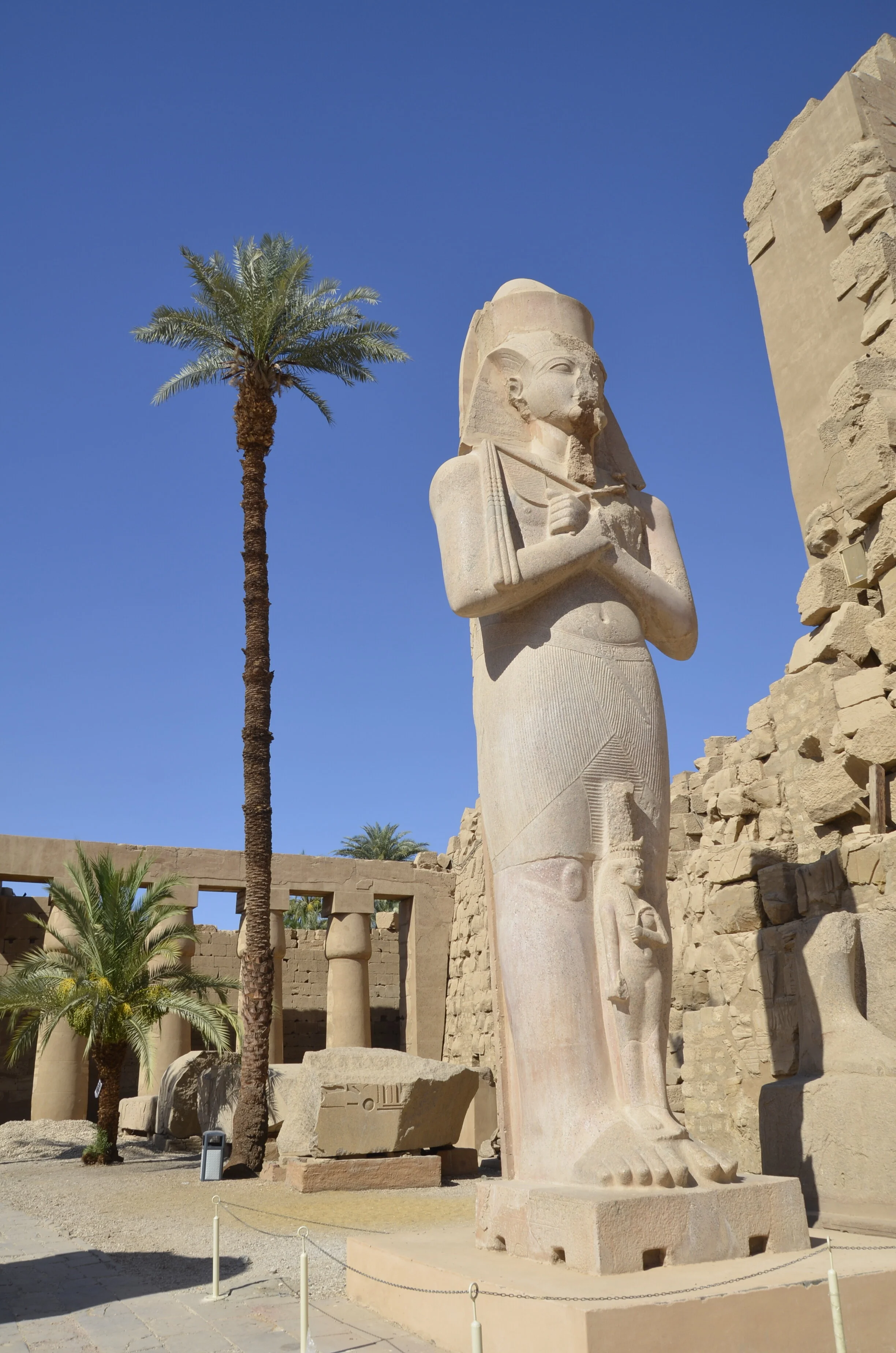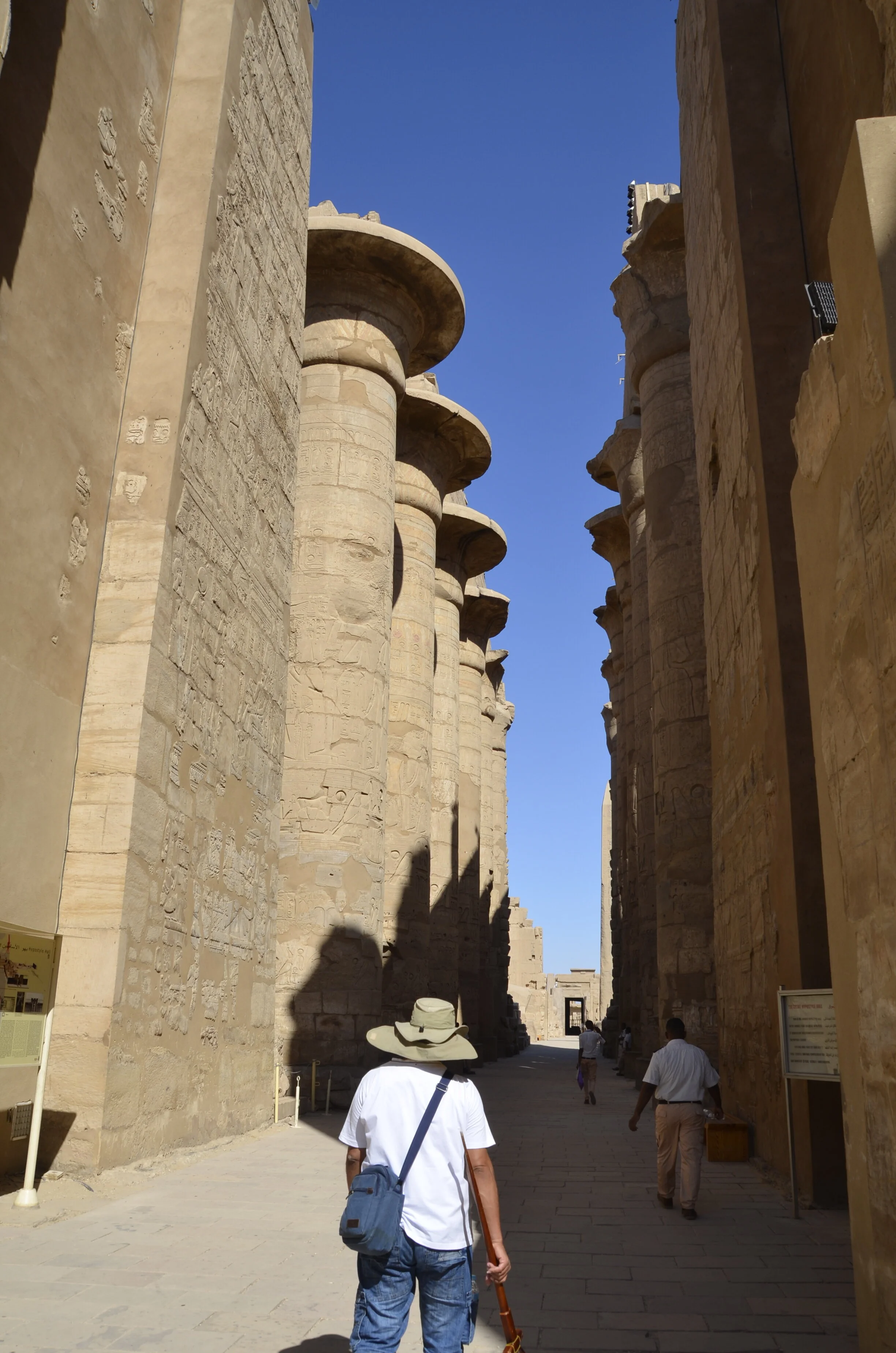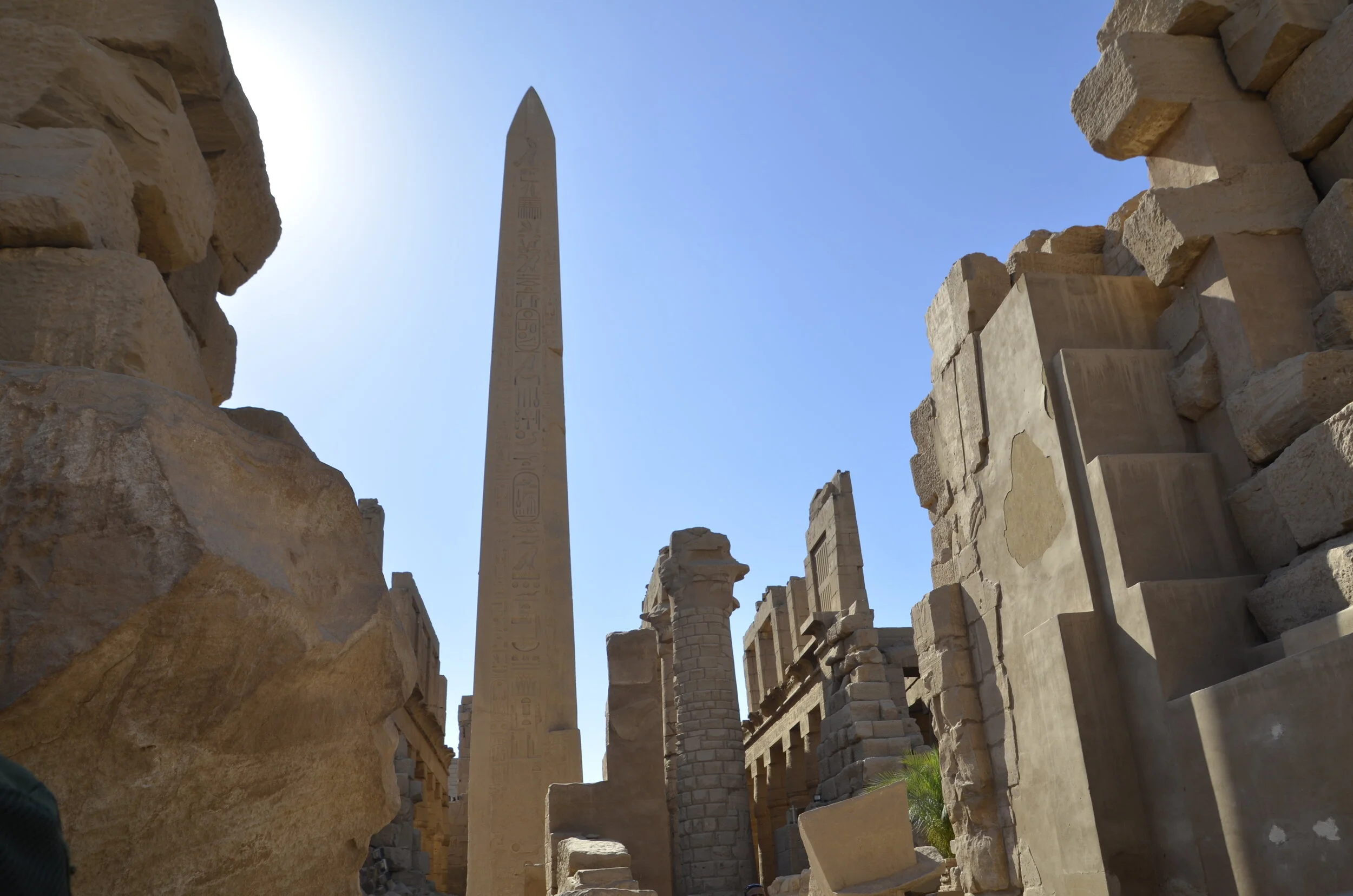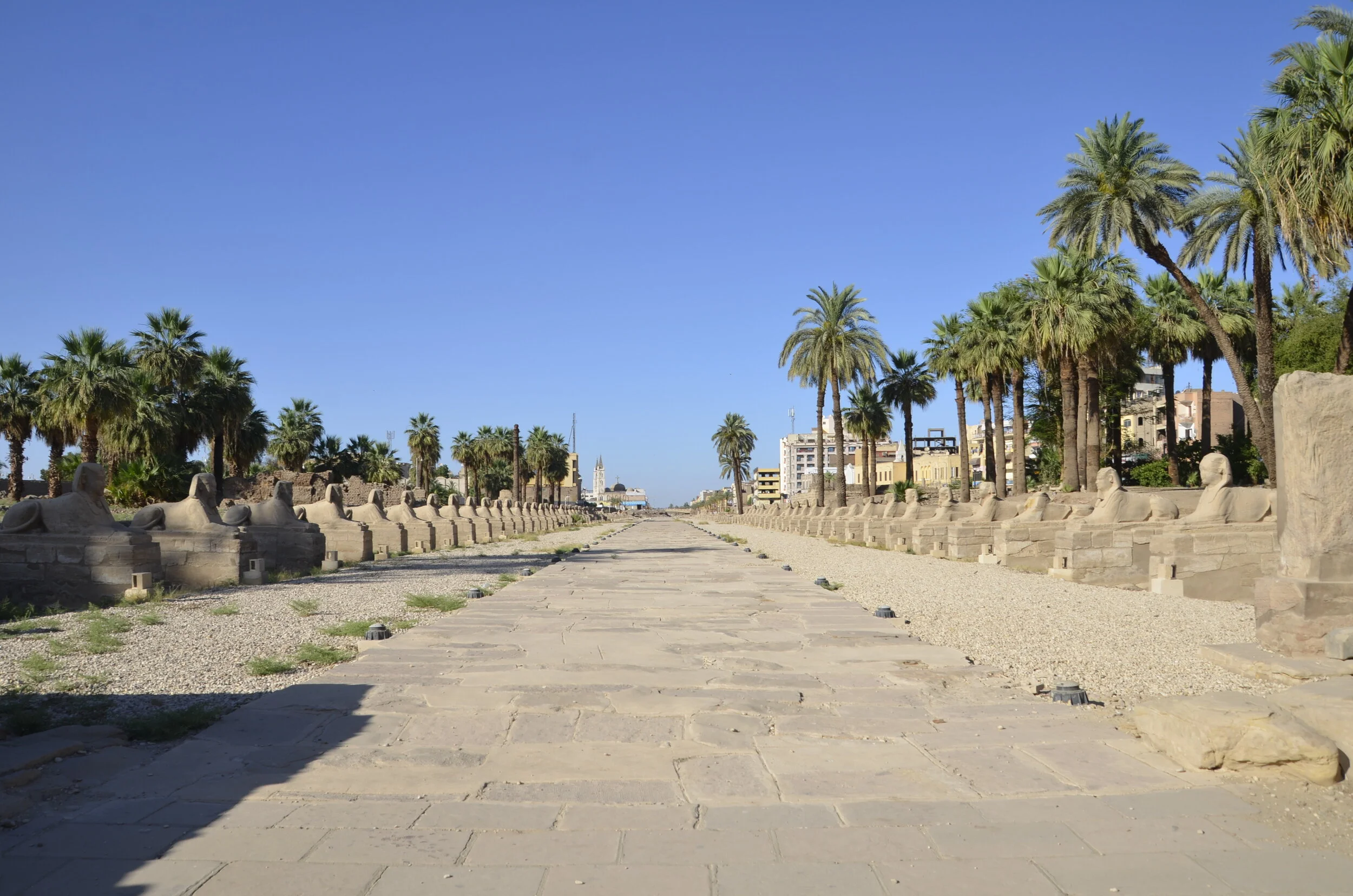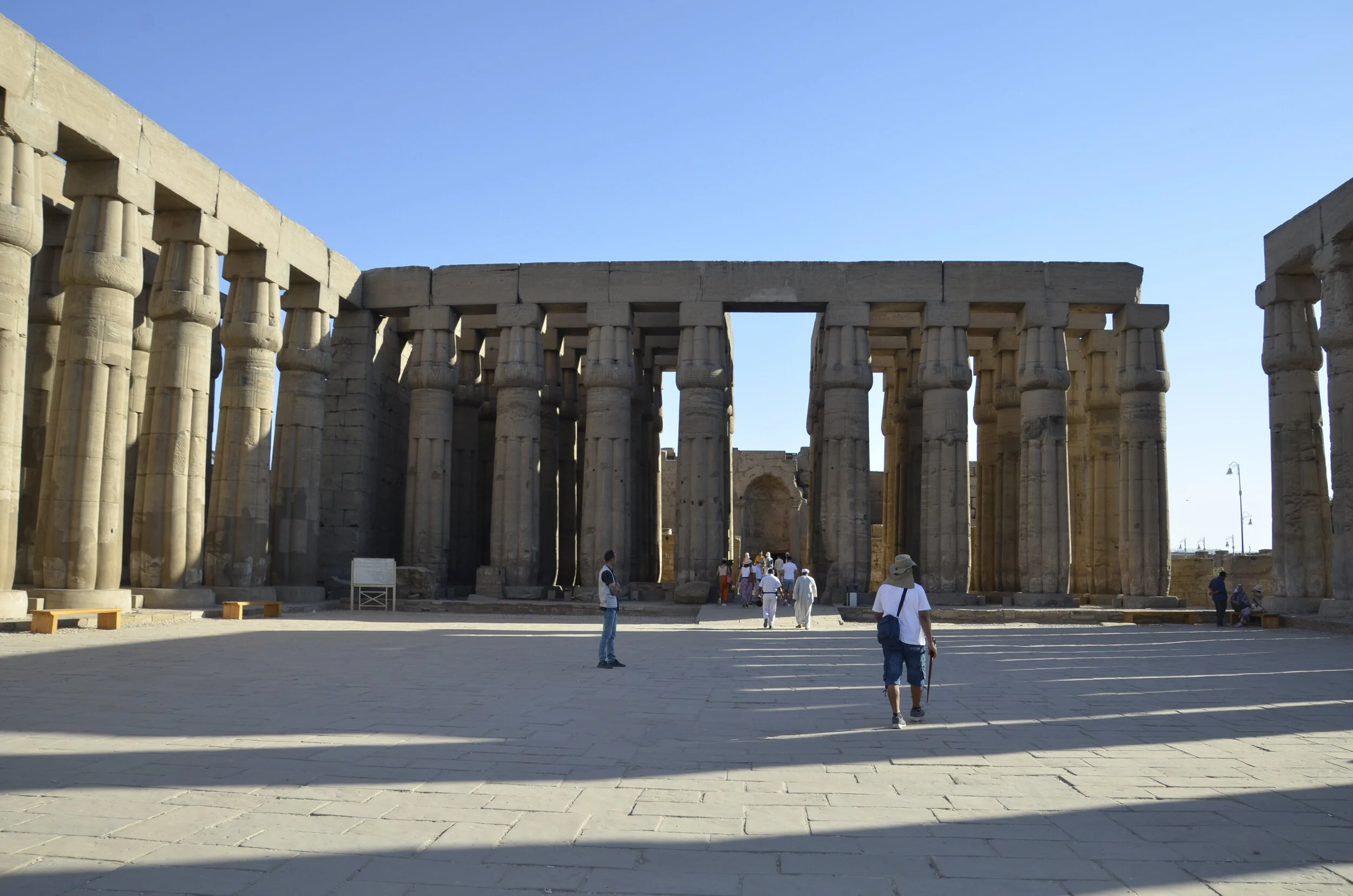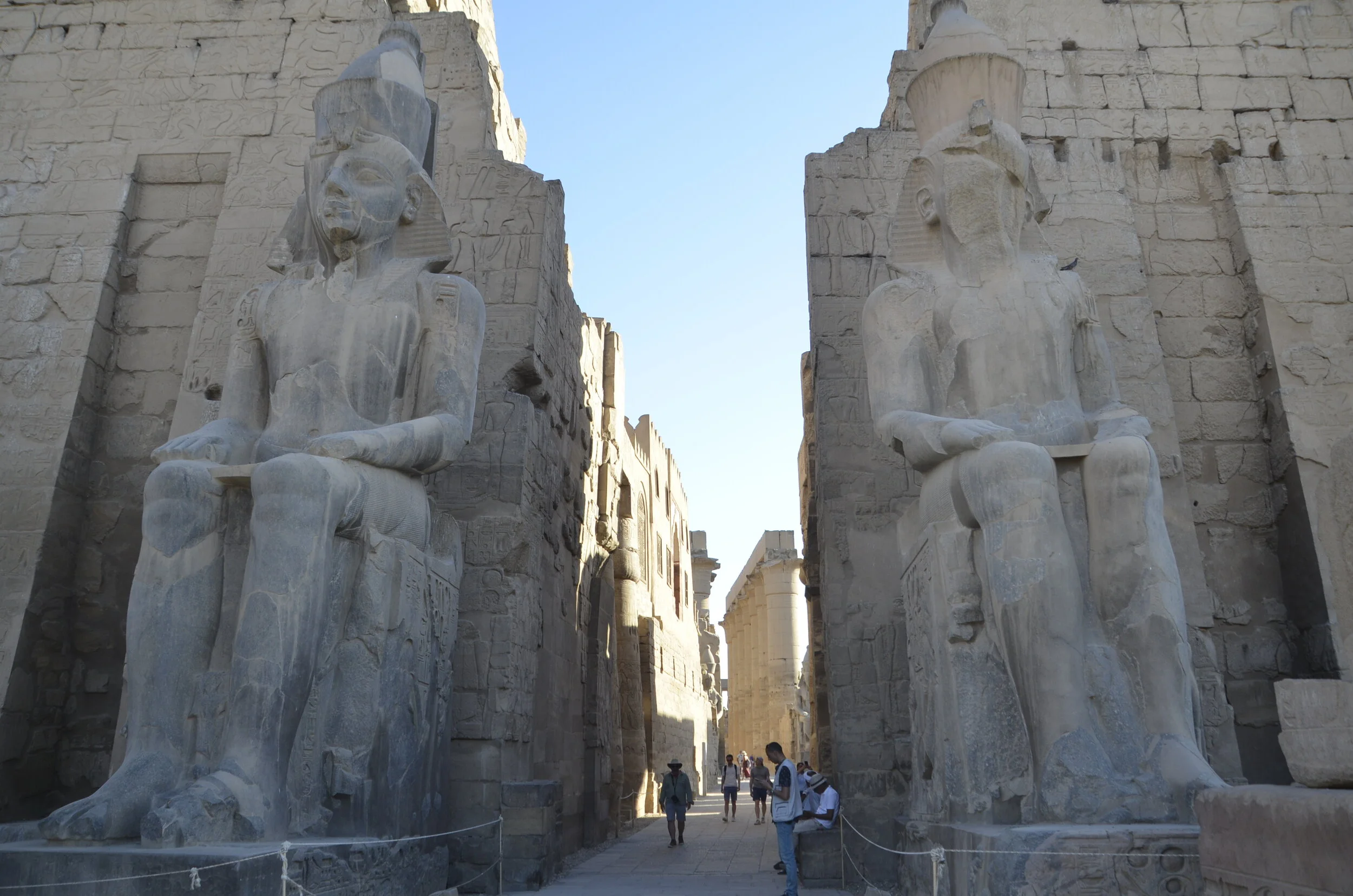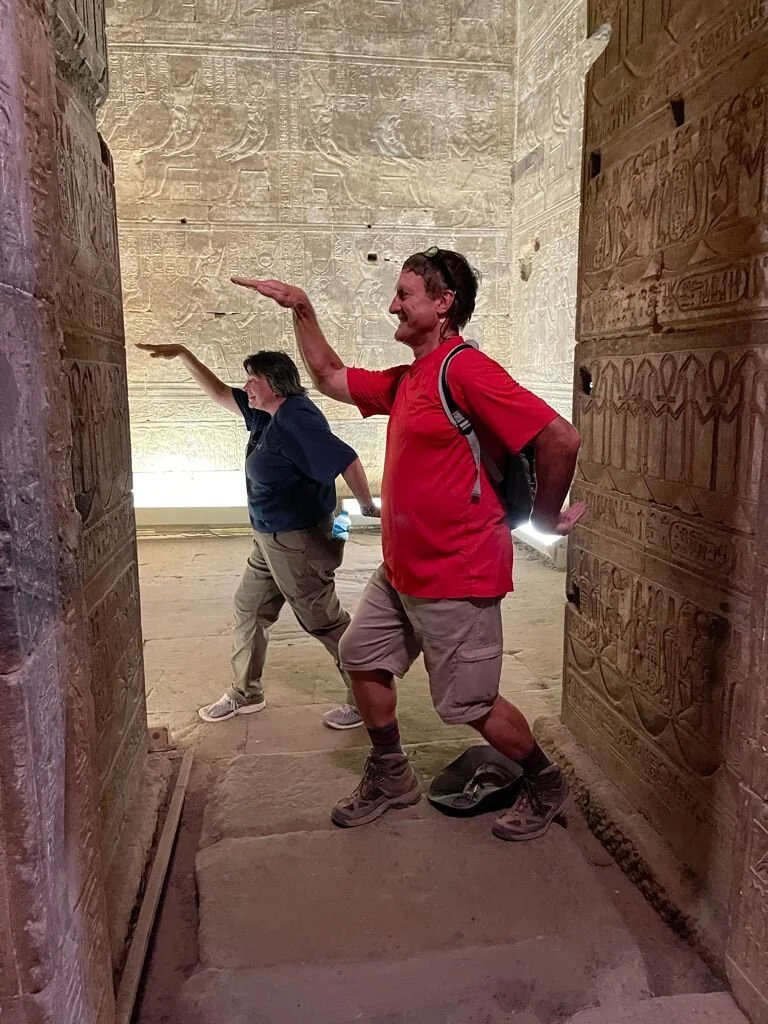Luxor, Egypt
Luxor is a city in southern Egypt on the east bank of the Nile. It sits on the site of the ancient city of Thebes, the capital of Upper Egypt during the New Kingdom (16th - 11th century BC). For those of you not well versed in ancient Egypt (like me), don’t worry…I’m not going to throw a lot of names and dates at you, other than to show how truly ancient the places we saw are.
The first site we visited was Karnak Temple. Most of the complex was built over 3,500 years ago.
That one picture has many interesting points in it — enlarge it to see visitors in traditional garb; rows of sphinxes with ram’s heads (we didn’t see this anyplace else); enormous columns, statues and obelisks.
Ramses II (or Ramesses II as he was referred to in Egypt) reigned for 66 years (died 1213 BC at the age of 90!)). Architecture flourished when he was Pharaoh, and he especially liked erecting statues of himself -
Some statues we saw had smaller people depicted between the legs of the main statue. These were children or wives of the pharaoh.
This Hypostyle Hall had 134 columns, most of which are 33 ft tall, while some are 69 ft tall! Seeing the carvings still present on them after 3000 years was amazing…
…and there are still colors!
We heard so many great stories, but I can’t begin to recall or retell them. I was especially drawn to those about Hatsheput, one of the very few female pharaohs. She had temples and statues built that were bigger and better than those of the pharaohs preceding her, to show how smart and great she was. This obelisk…
…stands at 29 meters (95 ft) and is the tallest of the 8 (still) standing obelisks in Egypt. A pharaoh after her reign wanted to erase her monuments, but rather than pull it down, it was built around to “hide” it -
Recently excavated, the “avenue of the sphinxes” was found to connect the 2 great temples in Luxor, Karnak and Luxor Temple (a mile apart).
The scale of Luxor Temple was quite eye opening (note the men in the shade at the base of the center statues) -
The inscription at the base of a statue is amazingly preserved, and depicts the uniting of Upper and Lower Egypt -
The columns in the central courtyard were made to resemble bundles of closed papyrus. Papyrus was the symbol of Lower Egypt (the Nile delta), while the lotus was the symbol of Upper Egypt.
The statues (of Ramses II, again) were carved of granite, while the buildings were made of sandstone -
This first day was very long, hot (104 degrees!), and exhausting. We just wanted to walk away…
… or at least, walk like an Egyptian.
I’ll tell more stories in the next post. ;)
